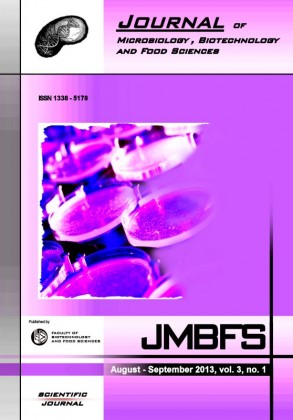CHEMICAL AND PHYSICAL PROPERTIES OF THE FORTIFIED WHEAT FLOUR WITH SYNTHETIC FENAEDTA COMPLEX
Keywords:
Fortified Flour, FeNaEDTAAbstract
This study includes fortification of two type of flour 70 and 80 % extraction with two sources of non-haem iron sodium iron EDTA (FeNaEDTA) which was synthesis in laboratory and ferrous sulfate in level of 30 mg iron/kg flour. The synthesis FeNaEDTA has been identified in several methods, infra red spectrophotometry, C.H.N analyzer and inductively coupled plasma optical emission spectrometry (ICP- OES). NaFeEDTA is the only non-haem source that has good bioavailability as it is relatively independent of flour composition and withstands the inhibitory effects of phytates.Chemical analysis of the two type of the flour before and after fortification with FeNaEDTA was done (moisture, ash , protein , fat and wet gluten)% and the amount of iron as mg/100g.The falling number was not affected by the above fortificants.The values of falling Number of 70% extraction for non-fortified and fortified flour by FeNaEDTA and ferrous sulfate were ( 425,426,427) second respectively, while for 80% extracted flour were (445,446,448) second respectively.
The color test showed an increasing of color degree upon fortified by iron sulfate and decreasing of upon fortified by FeNaEDTA in both type of flour.
Downloads
Download data is not yet available.
Downloads
Published
2013-08-01
How to Cite
Hussein Abed-Al-Kareem, A., Ahmed Sahi, A., & Mohammed Saleh, A. (2013). CHEMICAL AND PHYSICAL PROPERTIES OF THE FORTIFIED WHEAT FLOUR WITH SYNTHETIC FENAEDTA COMPLEX. Journal of Microbiology, Biotechnology and Food Sciences, 3(1), 72–75. Retrieved from https://office2.jmbfs.org/index.php/JMBFS/article/view/7080
Issue
Section
Food Sciences
License
Copyright (c) 2013 Ali Hussein Abed-Al-Kareem, Ali Ahmed Sahi, Alaa Mohammed Saleh

This work is licensed under a Creative Commons Attribution 4.0 International License.
All papers published in the Journal of Microbiology, Biotechnology and Food Sciences are published under a CC-BY licence (CC-BY 4.0). Published materials can be shared (copy and redistribute the material in any medium or format) and adapted (remix, transform, and build upon the material for any purpose, even commercially) with specifying the author(s).

